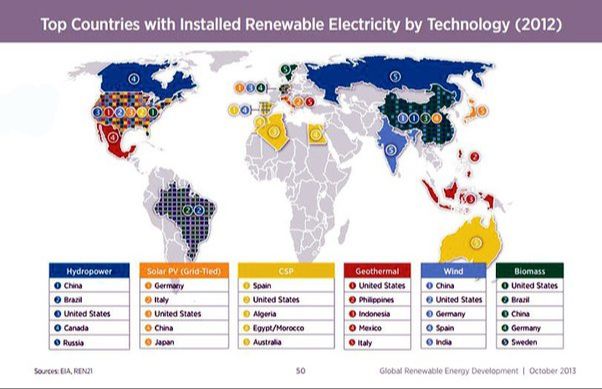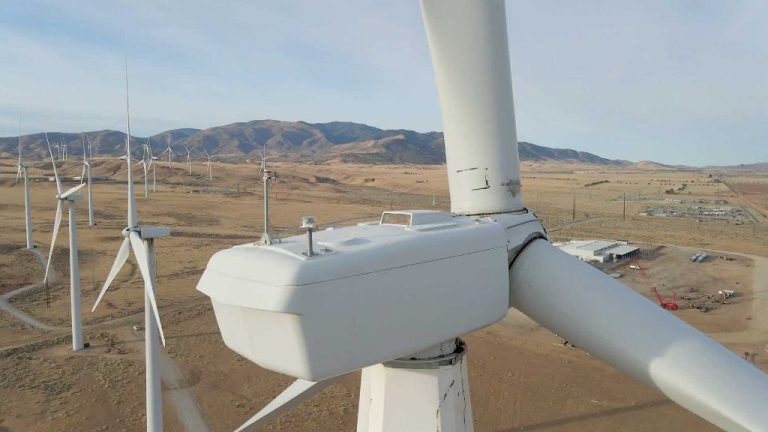What Is The 2023 Irs Form 5695?
What is IRS Form 5695?
Form 5695 is the official IRS form titled “Residential Energy Credits”. Its purpose is to allow taxpayers to claim tax credits for qualified energy efficiency improvements made to their main home during the tax year. The official instructions state that homeowners can use this form to claim two residential energy credits:
1) Nonbusiness Energy Property Credit: This covers the purchase of qualifying energy efficiency improvements like insulation, windows, doors, roofs, and heating and air conditioning systems. There is a lifetime limit of $500 for this credit, but the American Rescue Plan Act of 2021 removed this cap temporarily for 2021-2022.
2) Residential Energy Efficient Property Credit: This covers the installation of certain high-efficiency heating, cooling, and water heating appliances that meet stringent energy efficiency requirements. There are no lifetime limits on this credit.
The credits can help homeowners significantly lower the costs of making green upgrades to their homes. Filing Form 5695 allows taxpayers who install eligible energy efficient equipment or property to claim these credits and reduce their tax bill for the year. Instructions for completing the form can be found in the 2023 Instructions for Form 5695 published by the IRS.
Who Can Claim the Residential Energy Credit?
To qualify for the residential energy credit on Form 5695, you must own and use the home as your main residence. Both homeowners and certain tenants can qualify for the credit if they pay for eligible energy-efficient home improvements.
Specifically, you can claim the credit if you:
- Own and live in the home that has qualifying home improvements (most homeowners)
- Are a tenant-stockholder in a cooperative housing corporation (co-op owner)
- Are the owner of a condominium that qualifies for homeownership
- Are a tenant that paid for qualifying improvements and meet special rules (IRS Form 5695 Instructions)
The home must be located in the United States to qualify. You cannot claim the credit for a home under construction or a rental property. There are also income limits to qualify based on modified adjusted gross income (MAGI).
What Home Improvements Qualify for the Credit?
The residential energy credit covers a wide range of energy efficiency improvements to your main home in the United States. According to the IRS, qualifying improvements include the following:
- Insulation material or system specifically designed to reduce heat gain or loss in your home, including insulation for attics, floors, walls, ducts, and heating and cooling equipment.
- Exterior windows and doors that meet or exceed certain energy efficiency requirements for the climate zone where you live.
- Metal or asphalt roofs that meet Energy Star program requirements.
- Electric heat pump water heaters that meet Energy Star efficiency criteria.
- Central air conditioning systems that meet SEER and EER requirements.
- Natural gas, propane, or oil water heaters that meet certain energy factors.
- Advanced main air circulating fans used in efficient heating and cooling systems.
- Qualified biomass fuel stoves that use renewable plant materials for heating.
- Certain high efficiency wood and pellet stoves.
The products and equipment must meet technical energy efficiency requirements outlined on Form 5695 instructions. You should maintain records showing the products meet certification standards.
How Much Can You Claim for Qualifying Improvements?
The amount of credit you can claim depends on the type of home improvement project. There are credit amounts and limits to be aware of.
For nonbusiness energy property, you can claim 10% of the costs paid for certain energy-efficient improvements, up to a lifetime limit of $500. This includes costs for adding insulation, energy-efficient exterior windows and doors, and certain roofing materials. Only specific products qualify, which are listed in the instructions for Form 5695.
For residential energy efficient property, the credit amount ranges from 30% for solar electric, solar water heating, small wind energy, and geothermal heat pumps to 10-15% for fuel cells. Each type of property has a maximum credit amount you can claim. For example, the credit for solar electric is 30% of costs up to $600 for each half kilowatt of capacity. Refer to the Form 5695 instructions for details on credit rates and maximum amounts.
In total for both categories, you are limited to claiming no more than $500 in credits for the tax year. If your credits exceed $500, you must carry forward the excess amount to future tax years.
Completing Form 5695
Form 5695 is used to claim the residential energy efficient property credit. The form has several parts that must be completed to calculate the allowable credit.
Page 1 includes basic taxpayer information such as name, address, and Social Security number. It also includes lines to calculate and claim your total residential energy efficient property credit.
The qualifying property sections make up the bulk of the form. Here you provide information on the specific improvements made to your home, including the cost basis and date placed in service. There are separate sections for insulation, windows, doors, roofs, heating and air conditioning systems, water heaters, and qualified solar electric and solar water heating property.
Each type of improvement has its own requirements and limitations that must be followed. The form instructions provide details on allowable costs and standards the equipment must meet to qualify for the credit. You will need invoices and/or product documentation to substantiate your entries.
The end of the form sums up and limits the total credit amount based on income and tax liability. Most filers claiming the residential energy credit will need to file Form 5695 with their Form 1040 tax return.
See 2023 Instructions for Form 5695 for full details on sections, required information, and how to properly complete the form.
Claiming the Credit on Your Tax Return
The residential energy credit from Form 5695 can reduce your tax liability dollar-for-dollar. To claim it, you must complete Form 5695 and attach it to your Form 1040, 1040-SR, or 1040-NR when you file your federal income tax return.
Specifically, you will claim the residential energy credit on Form 1040 Line 48. The amount from Line 17 of Form 5695 gets entered on Line 48 of Form 1040. This directly reduces your total tax liability.
If the amount of your residential energy credit exceeds your tax liability, you may be able to carry forward the unused portion to future tax years. See the instructions for Form 5695 for details on how to calculate the carryover amount.
Carrying Forward Unused Credits
If you don’t have enough tax liability to claim the full Residential Energy Credit amount in the year you make qualifying improvements, you may be able to carry forward the unused portion of the credit to later tax years. This applies for certain improvements like geothermal heat pumps, solar energy systems, small wind turbines, and fuel cell property that are installed over multiple years.
According to the 2023 Instructions for Form 5695 from the IRS (https://www.irs.gov/pub/irs-pdf/i5695.pdf), you can carry forward unused residential energy credits for up to 5 years after the year the qualified improvement was installed. So if you install a solar panel system that qualifies for a $10,000 credit but can only claim $2,000 of it for 2023, you could claim up to $8,000 of the remaining credit over the next 5 tax years.
The carryover provisions let you stretch out the tax credit and maximize the value of the incentive for multi-year home improvement projects. Just make sure to save your receipts and keep track of carryover amounts each year on Form 5695.
Additional Rules and Exceptions
There are some special circumstances that may impact your ability to claim the residential energy credit on Form 5695:
Rental properties – The credit can only be claimed for a dwelling unit that you use as a residence. You cannot claim the credit for property that you rent or lease to others. However, there is an exception if you live in part of the dwelling and rent out just a portion of it (see Publication 501 for details).
Home sold during the year – If you claimed the credit but sold your home before the end of the year, you will need to recapture (pay back) part of the credit. Use Form 5695 Part III to calculate the recapture amount. See the instructions for line 33 for details.
Damage to home – If your home was damaged or destroyed and you ended up with a casualty loss, your credit may need to be refigured for that year. See Form 4684, Casualties and Thefts, and its instructions.
For more details on these and other special circumstances, refer to the instructions for Form 5695 and IRS Publication 501.
Form 5695 and State Tax Credits
The residential energy credit on Form 5695 is claimed on your federal tax return. However, many states also offer tax credits or rebates for energy efficiency home improvements. These state credits may have different rules and eligibility requirements than the federal credit.
You may be able to claim both the federal tax credit on Form 5695 and a state tax credit for the same improvement. However, you typically cannot claim both credits for the same expenses. For example, if you spend $5,000 on new energy efficient windows and claim a $500 federal tax credit, you would have to reduce the amount you claim for the state credit by the amount of the federal credit.
It’s important to review the specific rules in your state to determine eligibility and coordination between state and federal credits. Some states require you to submit a separate application or form to claim the state credit. Refer to your state’s Department of Revenue website for details.
You can find more information on state credits and rebates through the Database of State Incentives for Renewables and Efficiency.
Getting Help with Form 5695
If you need help completing Form 5695 or have questions about the residential energy credits, there are several resources available for assistance.
The IRS provides instructions for Form 5695 that explain who qualifies, which home improvements are eligible, how to calculate the credit, and how to claim it on your tax return. The instructions include line-by-line guidance as well as examples. You can find the instructions on the IRS website at https://www.irs.gov/forms-pubs/about-form-5695.
Additionally, the IRS provides taxpayer assistance by phone at 1-800-829-1040. IRS representatives can answer questions about Form 5695 eligibility and help walk through the form line-by-line.
If you use tax preparation software or hire a tax professional to complete your return, they can also assist with Form 5695. Most tax software programs will walk you through determining eligibility, entering the required information, and calculating the credit amount.
You may also find helpful guides on third-party websites that provide step-by-step instructions for filling out Form 5695. Just be sure the information comes from an authoritative tax source.





